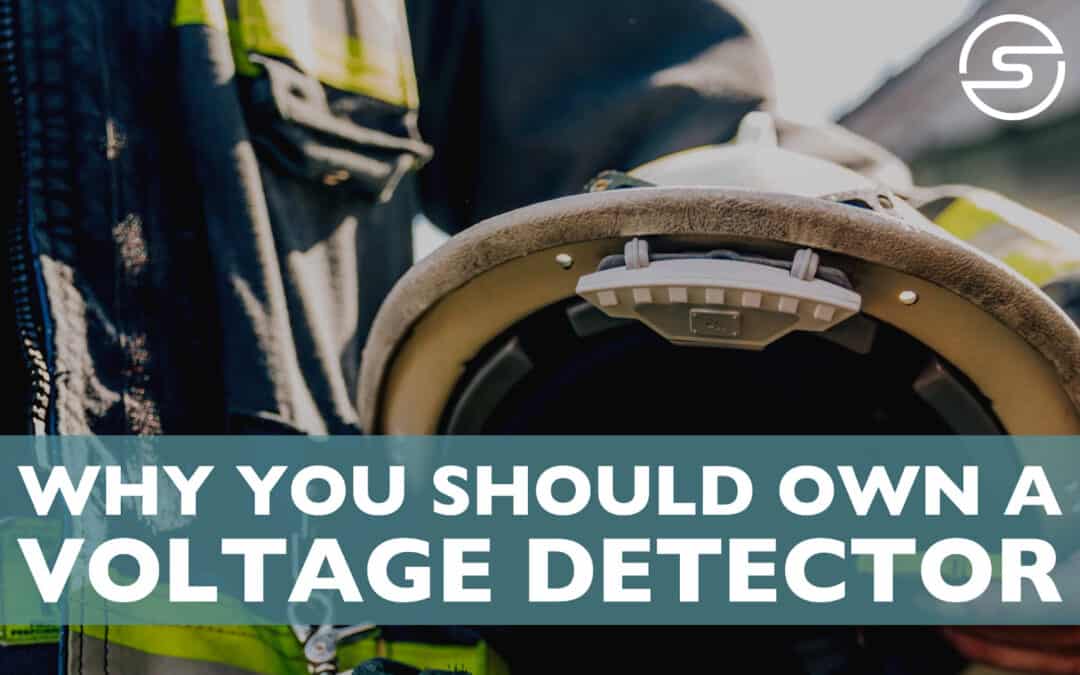Almost everyone has some sort of toolkit at home, even if they are not the “handyman” sort. Suppose something needs to be fixed or you want to do some small project. In that case, you need the right tool, even for elementary tasks: a hammer to hang a picture on the wall, a screwdriver for when a piece of furniture or a kitchen item has a loose part, and a measuring tape when you want to find out what size table will fit in your space.
As you build your kit up and begin to DIY for a few more things, one additional item that you want to consider is a voltage detector. There are several types, ranging from very inexpensive to fairly pricey, and different ones are used for different purposes. There are non-contact testers, voltage detectors with probes, electrical testers, cable testers, multimeters, and so on. Using the right one for your particular application is essential. But one thing they can all do is stop you from making a costly mistake.
That fact is, we heavily depend on electricity nowadays. Decades ago, you might have only had to worry about lights and some appliances. But modern life and work often rely on things like cell phones and computers, and many people cannot imagine living without a tablet, smart TV, and central HVAC. When one of our powered items does not work, we only sometimes know the problem. Is the item fried, or is there something wrong with my outlet? Is my lamp broken, or did the bulb go out?
These may seem like basic and even silly questions until you realize that, every year, hundreds of people die from electrocution accidents in the home. Many of these accidents occur from things like damaged wiring, trying to “fix” something electric that does not seem to be working, and incorrect use of things like extension cords or power strips. Some of these accidents are unfortunate results of unknown or unseen dangers. Others, however, are because people do not appreciate the risks associated with electricity and do foolish things.
A voltage detector cannot do your thinking for you, but having one and learning to use it correctly can save lives. When something goes wrong with an electric appliance or system, voltage detectors help troubleshoot the cause. When you know what and where the problem is, you can take the necessary precautions to keep yourself safe as you work to resolve it.
Depending upon which type you use, a voltage detector can indicate whether an outlet has gone dead or even if it has been wired correctly. The latter concern may seem silly: if it works, it works, right? Not so fast. An outlet in which the wires are connected wrong might mean that you can get an electric shock or even be electrocuted just by touching the socket of a lamp for which you are changing the bulb.
If you want to replace a standard switch with a dimmer, timer, or rocker switch or install a new light fixture, you can use a voltage detector to test the wires to ensure you have switched the correct breaker off before undertaking your work. A voltage detector can help you identify which bulb has caused that pesky string of Christmas lights to be half-lit up. A multimeter can tell you which plug on your car engine is causing your car to run rough or whether your car’s battery will get you through the winter.
Voltage Detectors Save Lives
Once you start to dig into and think about the uses of electricity in your immediate surroundings, it is easy to see why you should have at least one type of voltage detector in your tool kit.
But as you think about this, you should also come away with two critical observations. The first is to become fully aware of how much you depend upon your power company and everyone who works there. Whether it is the line workers out in the field or the person answering the phone, these workers keep your power on and make your life run smoothly. The second is to appreciate the dangers of electricity and the risks that power company personnel face daily to keep your lights on.
For electrical lineworkers, voltage detectors are not just another tool in the kit. They are critical and life-saving instruments. At Safeguard Equipment, we manufacture specialized voltage detectors for line workers and others who work around energized sources.
The COMPASS line of personal voltage and current detectors (PVCDs) are non-contact units that can alert line workers to the presence of energized sources, wires, and cables when working out in the field. They can be clipped onto a hat or shirt and withstand heat, cold, and inclement weather conditions. They have a 360-degree range of detection so that workers who go out at night or in other low-visibility conditions can know where a downed line is or know whether a line has energized the ground, fence, or another object. COMPASS PVCDs give visual and audible signals, indicating an energized source’s presence, proximity, and direction.
Safeguard Equipment’s COMPASS Pro emergency response solution has additional utilities. It is paired with Safeguard Equipment’s app, downloaded onto the user’s phone. If the unit detects a worker has fallen, had a head impact, or experienced an arc flash, the app will alert the in-house emergency response team of the event. The response team can then summon emergency response crews onsite to aid the injured worker.
COMPASS PVCDs are used by line workers, firefighters, first responders, arborists, cable TV installers, electricians, and others whose jobs may bring them into the proximity of energized lines. At Safeguard Equipment, our goal is to save lives. Whether it’s that voltage detector in your toolbox or one of our units on a line worker’s hard hat, we want everyone to observe electrical safety.
Contact us today for more information about Safeguard Equipment or for a demonstration of our products.
Views: 5

